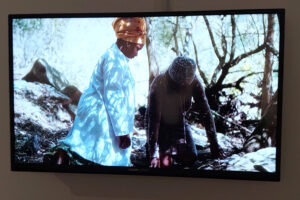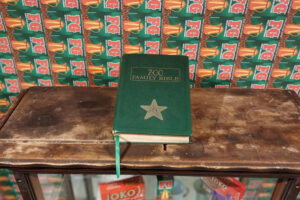

Amasione
by Nosipho Mantshongo
My artistic practice foregrounds acts of transgression through the use of invocations of umyalelo/taelo (prophecy) within the Zion Christian Church which is the largest African-initiated church. The church’s headquarters are in Zion City Moria in the Limpopo Province. My artistic practice seeks to expand and interrogate further what the photographer Nonzuzo Gxekwa asserts: “There’s an erasure that happened to black people’s cultures and traditions, accounting for a history turned upside down by religion. When Christianity was introduced to us, it saw many of our ancestors joining the church, with most forced to turn their backs on their customs”.
As a congregant in the ZCC church, it is of particular interest to me that the positioning and the agency of black women in the institution is never foregrounded nor spoken about. While uniforms serve as a form of identification in my artistic practice, they are used to signify power relations and speak back to an institution that erases women’s voices and labor.
The second umyalelo/taelo narrates acts of transgression by foregrounding the recuperative use of sonic and speech acts that are prohibited in the public spheres. This is portrayed through the history of the brass band within independent churches such as the ZCC where women are not allowed to perform yet witness and linking it to community histories. The third umyelelo/taelo foregrounds the everyday use of Amazi/Metsi within the ZCC church. In my art, I explore the theo-economies of water as part of an everyday phenomenon. I explore how the value of water changes from simple water and classify it as holy water. Through photography and installation, water is used to portray ritual acts such as baptism and cleansing (ukuhlambulula ) during umyalelo/taelo.
As an artistic methodology umyalelo/taelo in this juncture becomes an underlying currency of religion which I hope to be in conversation with other women artists who engage with the same tropes.








